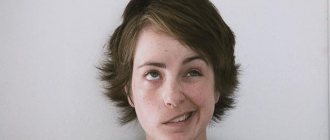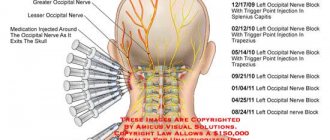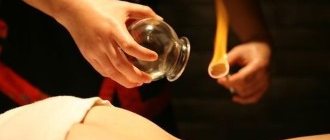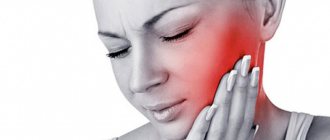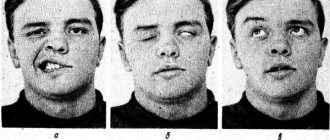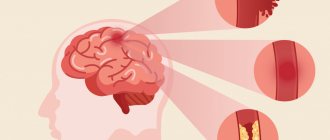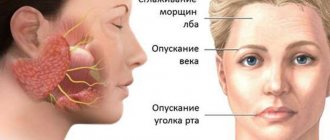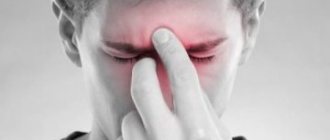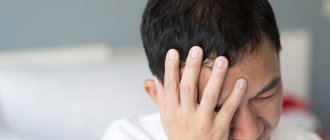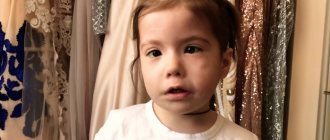Therapeutic physical training and massage for neuritis of the facial nerve (Bell's palsy) are important components of an integrated approach to eliminating facial problems.
Unpleasant symptoms of damage to the facial nerves occur as a result of many diseases (otitis media, cerebral circulatory disorders, brain tumors, skull fractures, hypothermia, infections). The disorders are expressed by paralysis of the facial and masticatory muscles. Most often they appear on one side, less often on both sides.
A special set of physical exercises for the face, massage, and treatment with a special position must be performed from the 1st day of the onset of the disease. Therapeutic exercise and massage improve blood flow in the damaged part of the face, gradually restore the functionality of facial expressions, and contribute to the return of clear speech.
Symptoms
The inflammatory process begins to develop gradually. At first there may be a feeling of pain behind the ear, but after a few days facial asymmetry occurs. The patient has a drooping corner of the mouth on one side, and the eye on the affected side squints poorly. When you try to close your lips into a “tube” on the affected side, your mouth becomes distorted. When you try to “blow out the candle,” the cheek on the affected side “sails.” There may be lacrimation from the eye on the affected side. With this pathology, a person loses the sense of taste on the front of the tongue. Hearing disturbance and increased salivation may occur. When closing an eye on the affected part of the face, the eye may not close completely. The patient's smile is asymmetrical. Symptoms develop over one or two days.
Early period of rehabilitation treatment
In the early period of rehabilitation treatment (days 1–10 of illness), positional treatment, massage and therapeutic exercises are used.
Positional treatment is used to eliminate facial asymmetry and consists of adhesive plaster tension (taping) from the healthy side of the face to the affected side. It is directed against the pull of the muscles of the healthy side and is carried out by firmly fixing the other free end of the patch to a special helmet-mask, made individually for each patient from a bandage (see figure).
Taping rules:
- Correction of the muscles of the healthy side should be carried out with such force that the antagonist muscles of the affected side are sufficiently free in their actions and do not experience the pull of the muscles of the healthy side.
- The fixation of the free end of the patch to the helmet must be rigid (even double-folded) to keep healthy muscles in the correct position.
- Taping to reduce the palpebral fissure is carried out with one or two narrow strips of adhesive tape, which is attached to the skin of the eyelid in the middle of the palpebral fissure and gently stretched outward and upward, with the free end also attached to a fixed helmet. The narrower the palpebral fissure is when stretched, the easier it closes during involuntary blinking. In this way, the eye is naturally moistened with tears, which protects the cornea from drying out and ulceration.
- After the treatment session, you need to lubricate the skin areas to which the patch was attached with nourishing creams.
Recommendations for the patient:
- sleep on your side (affected side);
- chew food on both the affected and healthy sides;
- sit for 10–15 minutes 3–4 times a day with your head tilted towards the affected side, supporting it with the back of your hand (resting on your elbow);
- tie a scarf, pulling the muscles from the unaffected side to the affected side (from bottom to top), while trying to restore the symmetry of the face.
Treatment by position should be carried out during the daytime, when motor functions are most necessary for the patient to perform household, work and therapeutic activities. Taping to reduce the palpebral fissure, aimed not only at eliminating the muscle defect, but also at preserving the cornea, is also used at night, when it is especially important that the eye is completely closed. In the first days of the disease, adhesive plaster tension is carried out in fractions: 30–60 minutes 2–3 times a day (mainly during active facial actions: when eating, talking, communicating with relatives and doctors), then for 2–3 hours. Therapeutic gymnastics at this stage is carried out in small doses and is purely selective. The focus is on the muscles of the healthy side:
- dosed tension and relaxation of individual muscles and entire muscle groups;
- isolated tension (and relaxation) of those muscle groups that provide certain facial expressions (smile, laugh, etc.) or are actively involved in the articulation of certain labial sounds: [p], [b], [m], [v], [f] , [y], [o];
- minimal muscle tension, especially in the muscles surrounding the mouth.
All these exercises for the muscles of the unaffected side are of a preliminary, training nature and are aimed at preparing for effective exercise in the main period. A gymnastics session lasts 10–12 minutes and is repeated 2 times during the day.
Tests and diagnostics
A neurologist makes a diagnosis based on the patient’s complaints and clinical picture. The neurologist may ask you to make movements with your facial muscles - close your eyes, bare your teeth, raise your eyebrows, puff out your cheeks or whistle, and wrinkle your nose. Such tests allow the doctor to determine the presence of neuritis. If the diagnosis is in doubt, the doctor may prescribe the following tests:
- CT, MRI;
- Electroneuromyography (ENMG);
Additionally, the neurologist may recommend consultation with a neurosurgeon and otolaryngologist.
Treatment of neuralgia
There are not many remedies that really help with neuralgia. Usually these are drugs that reduce nerve conduction, such as carbamazepine, tegretol. But in order for treatment for shooting pain in the head to be effective, it must eliminate the irritation of the nerve.
Often the nerve is pinched as it exits the skull due to bone displacement, for example after injury, or between blood vessels or strained muscles. Special osteopathic techniques can eliminate displacement and relieve irritation (irritation) of the nerve, after which the effect appears after a few days. Osteopathic treatment for shooting pain in the head does not require drugs or surgery.
Treatment of neuritis of the facial nerve
Treatment begins with drug therapy to relieve swelling and inflammation. Treatment may include the following groups of drugs:
- glucocorticosteroids;
- vasodilators;
- diuretics;
- B vitamins (in the absence of allergic reactions);
- non-narcotic analgesics;
- Moisturizing drops may be prescribed for the eyes to prevent dry mucous membranes.
With secondary neuritis, it is necessary to treat the disease that caused the neuritis.
How effective is massage?
Regular, properly performed massage is an effective remedy for restoring facial activity. However, each patient's nervous system reacts to it differently: some patients have an almost instantaneous response, while others have a delayed reaction.
Depending on the severity of pain and the severity of nerve damage, the massage therapist adjusts the massage parameters:
- Impact force;
- Speed;
- Duration of the session.
The longer the massage is done, the greater the effect it will have.
Consequences and complications
Treatment must be started as quickly as possible, because
a year after the onset of the disease, the muscles will completely atrophy and their functionality cannot be restored. Complications may occur if therapy is not started at the first signs of the disease. With a long course of the disease, contracture of the facial muscles may occur, which is very difficult to restore. Disturbances in the sense of taste, visual disturbances (blindness, corneal ulcer), spasm of the muscles of the face and eyelid may occur. Consequences after the disease in some cases can last a lifetime.
Period of residual effects
During the period of residual effects (after 3 months from the onset of the disease), all types of exercise therapy used in the main period continue to be used, with an emphasis on therapeutic exercises, the task of which is to increase muscle activity to recreate maximum symmetry between the unaffected and affected sides of the face. During the same period, the training of muscle efforts in various facial situations increases.
According to summary global medical statistics, facial neuritis is observed in residents of various countries in approximately 2–3% of cases of all diseases of the peripheral nervous system, amounting to 16 to 25 cases per 100 thousand population.
Author: Irina Kotesheva, doctor of physical therapy and sports medicine, candidate of medical sciences
The material uses photographs belonging to shutterstock.com
Rehabilitation in neurology
At the Healthy Beauty Medical Center you can receive high-quality and timely rehabilitation after neuritis of the facial nerve. Neuritis of the facial nerve (Bell's palsy) is an inflammatory lesion of the peripheral nerve trunk, which controls (innervates) the work of the facial muscles of one half of the face. As a result, weakness, unilateral paresis (decreased muscle movements) or paralysis (complete absence of muscle movements) and facial asymmetry, sagging cheeks develop in these muscles. Causes leading to neuritis: hypothermia, drafts, infections, stress, decreased immunity, deficiency of B vitamins.
Rehabilitation after neuritis of the facial nerve
With timely, proper treatment and proper rehabilitation, the symptoms of the disease are reversible. If symptoms are left untreated, this will lead to persistent asymmetry and distortion of the face, and can also lead to contracture of the facial muscles.
Symptoms:
- pain is felt behind the ear;
- profuse drooling;
- not complete closure of the eyelids;
- watery eyes while eating;
- the eye blinks less frequently on the affected side;
- the eyebrow is higher than on the healthy half;
- smoothness of the nasolabial fold;
- the cheek is “sagging”, the patient cannot puff out his cheeks;
- folds on the forehead do not form, the patient cannot wrinkle his forehead;
- speech may become slurred, it is impossible to smile or spit.
Treatment is medication plus physiotherapy.
The Healthy Beauty Studio offers the following procedures as part of rehabilitation after neuritis of the facial nerve:
- Manual facial modeling with reflexology.
- Reflexology procedure.
- Massage of the cervical-collar area.
- Kinesio taping.
We speed up the recovery process. We are struggling with the consequences of poor quality treatment and rehabilitation, with the consequences of long-term neuritis.
Manual facial modeling with reflexology
Manual facial modeling with reflexology is a comprehensive approach for neuritis of the facial nerve in order to achieve both aesthetic and health goals. During the procedure, the specialist also acts on the projections of the facial and trigeminal nerves in order to relax the facial muscles where necessary, relieve spasms from deep structures and restore innervation in the tissues.
Manual facial modeling helps stimulate muscles and restore their functioning. Metabolic processes also accelerate, blood circulation and lymph outflow improve. Which leads to speedy rehabilitation after suffering neuritis of the facial nerve.
Spli (in English translation) In this case, separate the muscle from the bone, work out the muscle fiber. Thus, the split technique allows you to better work out blocks, clamps and spasms localized in the muscle fiber and underlying tissues, which allows you to improve blood circulation, nutrition in the tissues, and relax muscle structures. In addition to split techniques, if necessary, interoral massage, aesthetic taping, modeling mask are added (a detailed description of the techniques is in the section “manual modeling of the face”).
- Duration? The procedure lasts 60-90 minutes, depending on whether this is your first visit or not and on your wishes.
- How many procedures does the course include? For maximum results, on average, 5-10 procedures are required, depending on each individual situation.
Massage of the cervical-collar area
Massage of the cervical-collar area is carried out for therapeutic and preventive purposes. The benefits of massage of the neck and head are due to the following mechanisms: mechanical effect on the muscles of the neck and shoulder girdle, relaxes them, this relieves the feeling of fatigue and tension; massage improves blood microcirculation in the cervical-collar area, which helps reduce pain in case of swelling (this is what is called “blown muscle”), or accumulation of lactic acid (after significant physical activity), due to the fact that the neck muscles relax, blood supply to the brain improves.
It is this effect that helps eliminate headaches and normalize sleep; impact on reflexogenic zones located in this area improves the functioning of internal organs; During the procedure, the specialist also acts on the projections of nerve endings in order to relax muscles, relieve spasms from deep structures and restore innervation in tissues.
- Duration? The procedure lasts 30 minutes
- How many procedures does the course include? It is recommended to do classic massage in courses of 6-10 procedures. It is advisable to take short breaks between procedures - approximately 1-3 days. To maintain the achieved result, the course can be repeated after 2 months or massage once a week without breaks.
Kinesio taping for neuritis
Taping is an effective technique developed in Japan 30 years ago. It is high-quality 100% cotton tapes coated with hypoallergenic glue that is activated by body temperature, while having elasticity similar to our skin (130%-140%) that can be called kinesio tapes. At the Healthy Beauty medical center, premium quality tapes CureTape (Nederland) are used in procedures, which are suitable for applications even on the most sensitive skin.
The tape is glued to the skin and has an effect on muscle, vascular, nervous and connective tissue. Thanks to its fibrous structure, kinesio tape does not interfere with the respiratory function of the skin and the free drainage of secretions from the sweat and sebaceous glands. Kinesio tape can remain on the skin for 3-5 days, which allows it to be used with a continuous therapeutic effect. Mechanisms of action. Among the numerous effects of kinesio tape on the body, two main ones can be distinguished: mechanical and neuroreflex. The concept of the mechanical theory is to enhance the activation of microcirculation in the intercellular substance. An elastic tape glued to the skin activates microcirculation due to decompression. Local blood flow in tissues improves and inflammatory mediators are removed, thus realizing its lymphatic drainage effect.
Neuroreflex mechanisms are realized through the activation of proprioceptors and the inclusion of reflex reactions of the central nervous system. Kinesio tape affects skin-kinetic sensitivity, stimulating receptors located in the skin, muscles, tendons, and joints. The level of peripheral nerve damage is of great importance, since the options for the techniques used depend on this. If the damage is localized in the nerve canal, then it is preferable to use laxative techniques in combination with lymphatic drainage correction. If there is damage along the nerve in the thickness of the soft tissue, one of the possible application options is to create a “tunnel” using tape in the projection of the passage of the nerve.
- Duration? The procedure lasts from 10 minutes.
- How many procedures does the course include? A recommended course of 10-15 procedures
Advantages and disadvantages of this treatment
The advantages of this method of treatment are that with the right treatment, it becomes possible to completely restore muscles .
Considering that with some neuritis speech also suffers, this is very uncomfortable. Massage helps correct this problem too.
A significant advantage is that with this treatment, recovery takes much less time than if the treatment was carried out only with medication.
The main disadvantage is that if the massage is performed incorrectly, there will be no effect . When it comes to self-massage, this happens quite often.
Also, in the case of an undetected tumor or imperceptible otitis, even a long massage does not bring results. In such cases, it is necessary to look for the cause and eliminate it. From here we proceed that massage for this disease is a very useful procedure that helps muscles recover faster and gives them the opportunity to “work” as usual.
Elimination of a large number of unpleasant consequences of the disease is a significant advantage of this treatment method.
Even though such effects are often painful, it is worth enduring the unpleasant sensations in order to be completely healthy.
